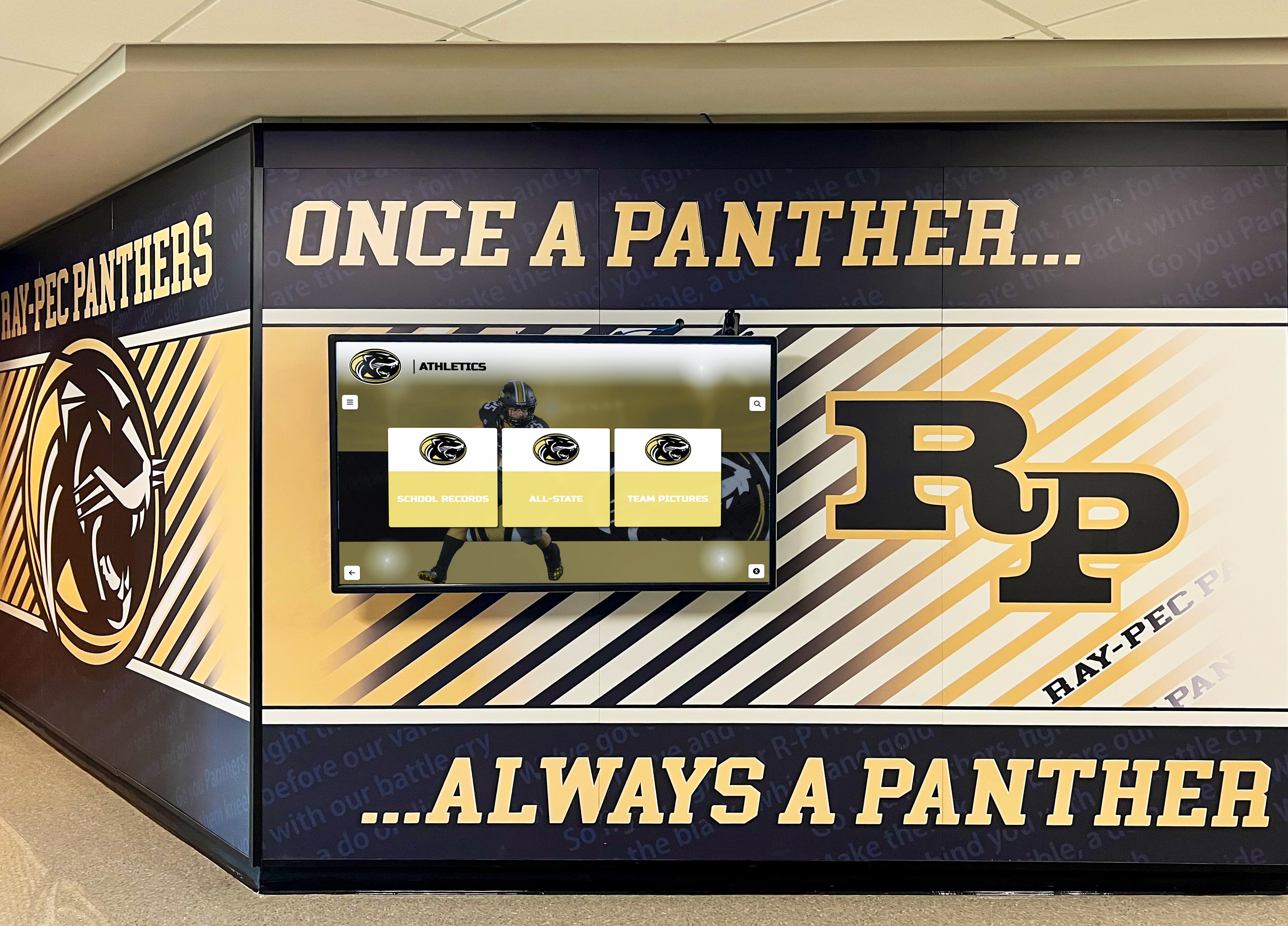Key Takeaways
Discover how theatre interactive display boards transform drama program recognition in high schools. Learn about digital solutions that celebrate theatrical excellence, boost participation, and build arts culture.
Why Theatre Recognition Matters in High School Education
Performing arts programs face persistent challenges securing resources, respect, and visibility comparable to athletic departments. This recognition gap creates real consequences for program sustainability, student participation, and educational equity.
The Recognition Disparity Between Athletics and Theatre
Most high schools feature prominent athletic trophy cases, championship banners, digital scoreboards, and extensive sports recognition displays. These visible celebrations communicate institutional priorities while inspiring current athletes and attracting prospective students. Theatre programs, despite requiring similar time commitments, developing equivalent skills, and delivering comparable educational benefits, commonly receive far less visible acknowledgment.
Common Recognition Inequities:
- Athletic halls of fame with minimal performing arts representation
- Prominent trophy cases displaying sports championships while theatre awards remain in department offices
- Digital displays showing athletic statistics without equivalent theatrical production information
- Championship banners for sports teams while drama productions go unrecognized
- Athletic program promotion through marquees and signage while theatre receives limited visibility
This disparity communicates unintended messages about institutional values, potentially discouraging arts-inclined students from participation while undermining drama program sustainability. According to research on school arts programs, visible recognition directly influences student enrollment decisions, parental support, and community perception of program quality and importance.
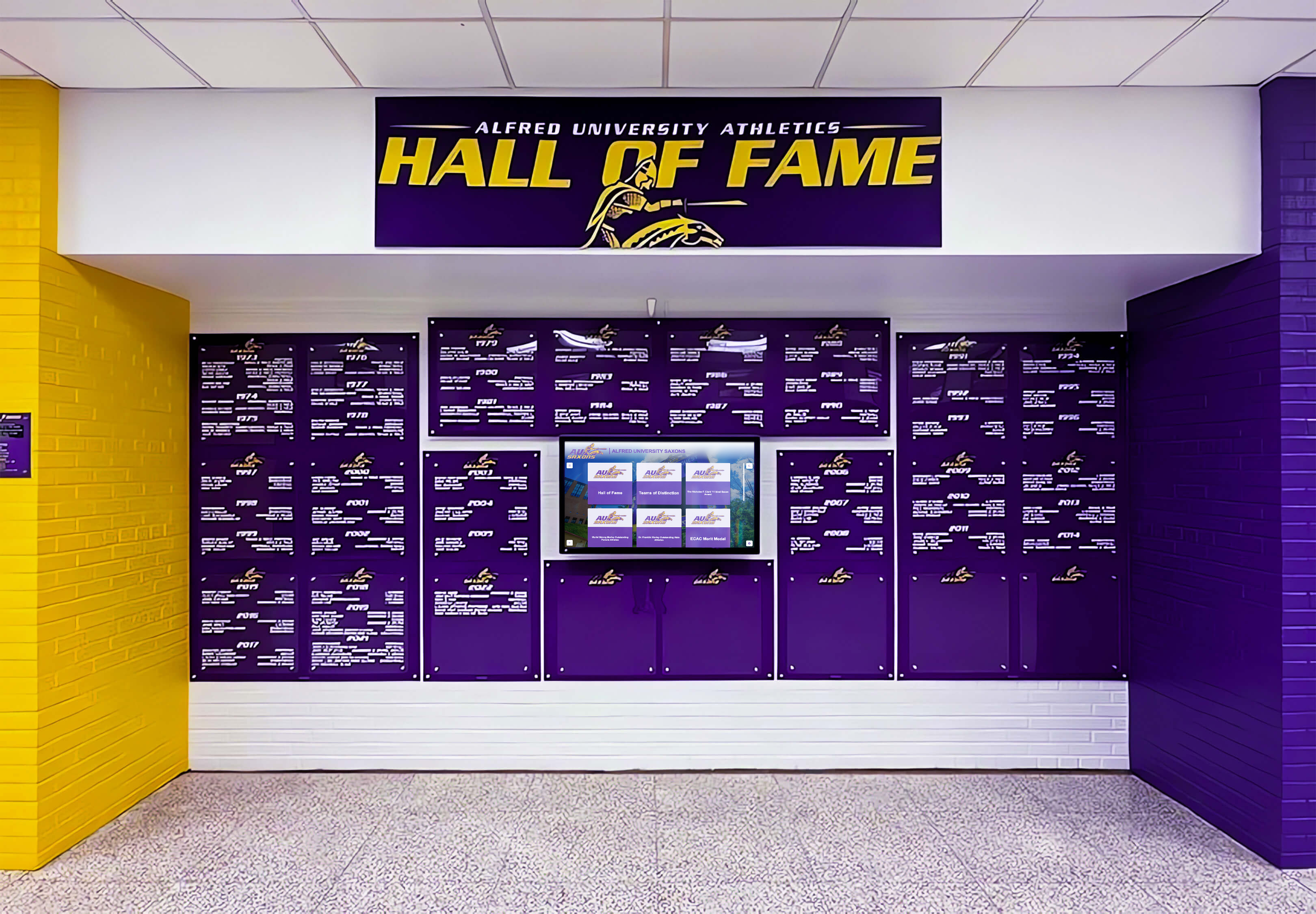
Educational Benefits of Theatre Participation
Theatre programs deliver profound educational outcomes deserving equivalent recognition to athletics:
Academic and Cognitive Development:
- Enhanced reading comprehension and literary analysis through script study
- Improved memory and cognitive flexibility from memorization and character development
- Critical thinking development through dramatic interpretation and analysis
- Historical and cultural learning embedded in theatrical productions
- Vocabulary expansion and communication skill development
Social and Emotional Growth:
- Confidence building through public performance experiences
- Empathy development by inhabiting diverse characters and perspectives
- Collaboration skills from ensemble-based creative processes
- Emotional intelligence growth through character exploration
- Resilience building by managing performance anxiety and challenges
Career-Relevant Competencies:
- Public speaking and presentation skills applicable across professions
- Project management experience through production coordination
- Creative problem-solving in technical and artistic challenges
- Teamwork and leadership in collaborative creative environments
- Work ethic and discipline from rehearsal commitment
Research consistently demonstrates that students involved in theatre programs show higher academic achievement, better attendance, stronger social connections, and greater college readiness compared to non-participating peers. These measurable benefits warrant recognition systems that honor theatrical excellence with the same visibility as athletic accomplishment.
What Theatre Interactive Display Boards Encompass
Modern theatre recognition extends beyond traditional bulletin boards to comprehensive digital systems that celebrate all aspects of drama program excellence.
Student Performer Recognition
Interactive displays showcase acting excellence across all participation levels:
Lead and Supporting Role Achievements
- Featured roles in major productions
- Character development excellence
- Multiple production participation
- Vocal and physical performance skill
- Dramatic range across varied roles
- Senior capstone performances
Ensemble and Chorus Participation
- Ensemble member contributions
- Chorus excellence in musical productions
- Background character commitment
- Understudy preparation and performance
- Multi-production involvement
- Ensemble leadership and mentorship
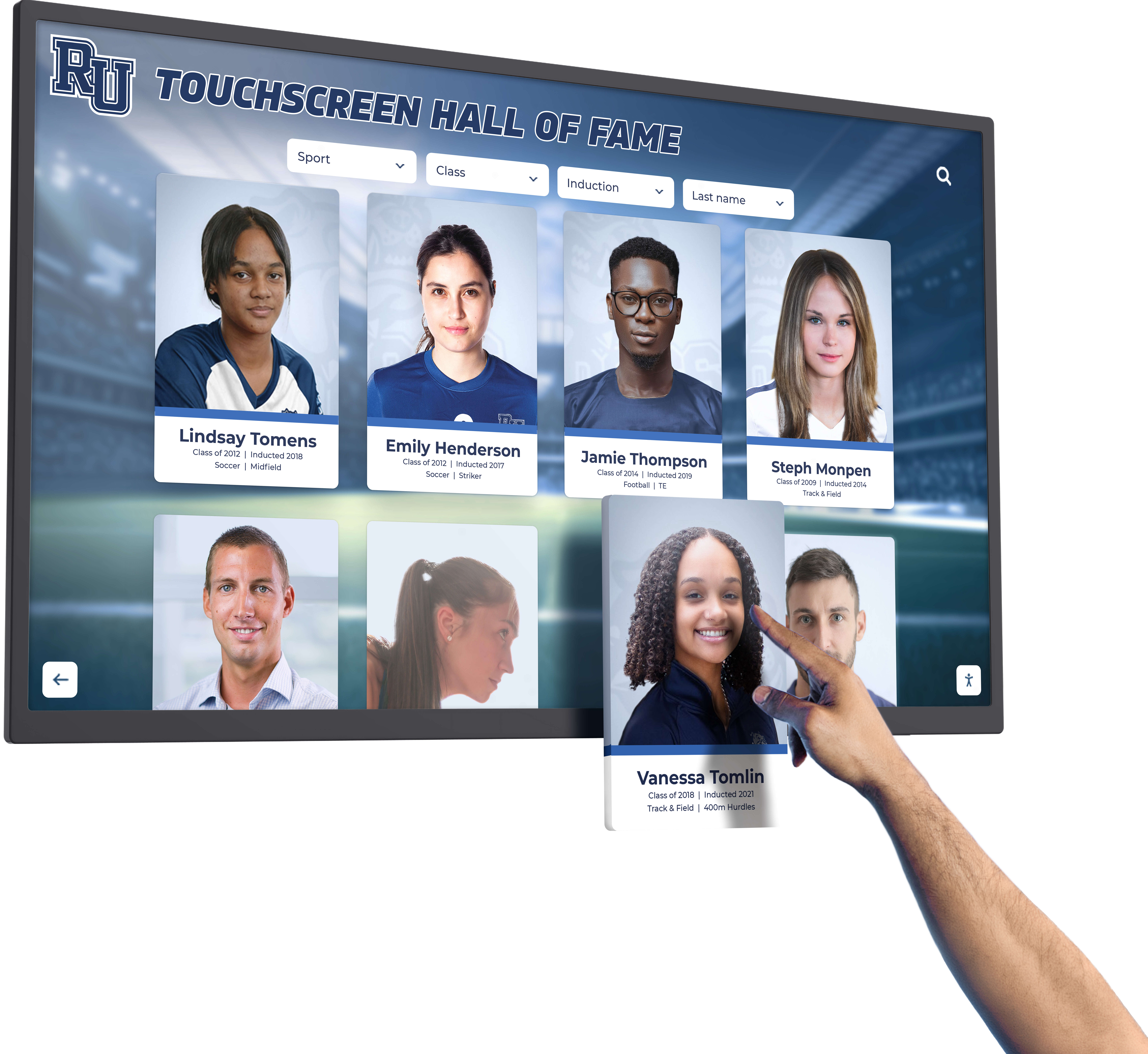
Competition and Festival Recognition
- Individual performance competition results
- Monologue and scene competition achievements
- State thespian conference honors
- Regional and national theatre festival participation
- Improvisation competition results
- All-state theatre selections
- Theatre scholarship recipients
Solutions like digital recognition displays for student achievements enable comprehensive performer profiles including production photographs, role histories, character descriptions, and performance video excerpts that bring theatrical excellence to life.
Technical Theatre Excellence
Behind-the-scenes contributions deserve equal visibility to on-stage performances:
Technical Direction and Design
- Set design and construction excellence
- Lighting design and execution
- Sound design and operation
- Costume design and wardrobe management
- Props design and creation
- Stage management and production coordination
Specialized Technical Skills
- Carpentry and construction expertise
- Electrical and lighting technology
- Audio engineering and sound technology
- Sewing and costume construction
- Makeup and special effects artistry
- Stage combat and safety coordination
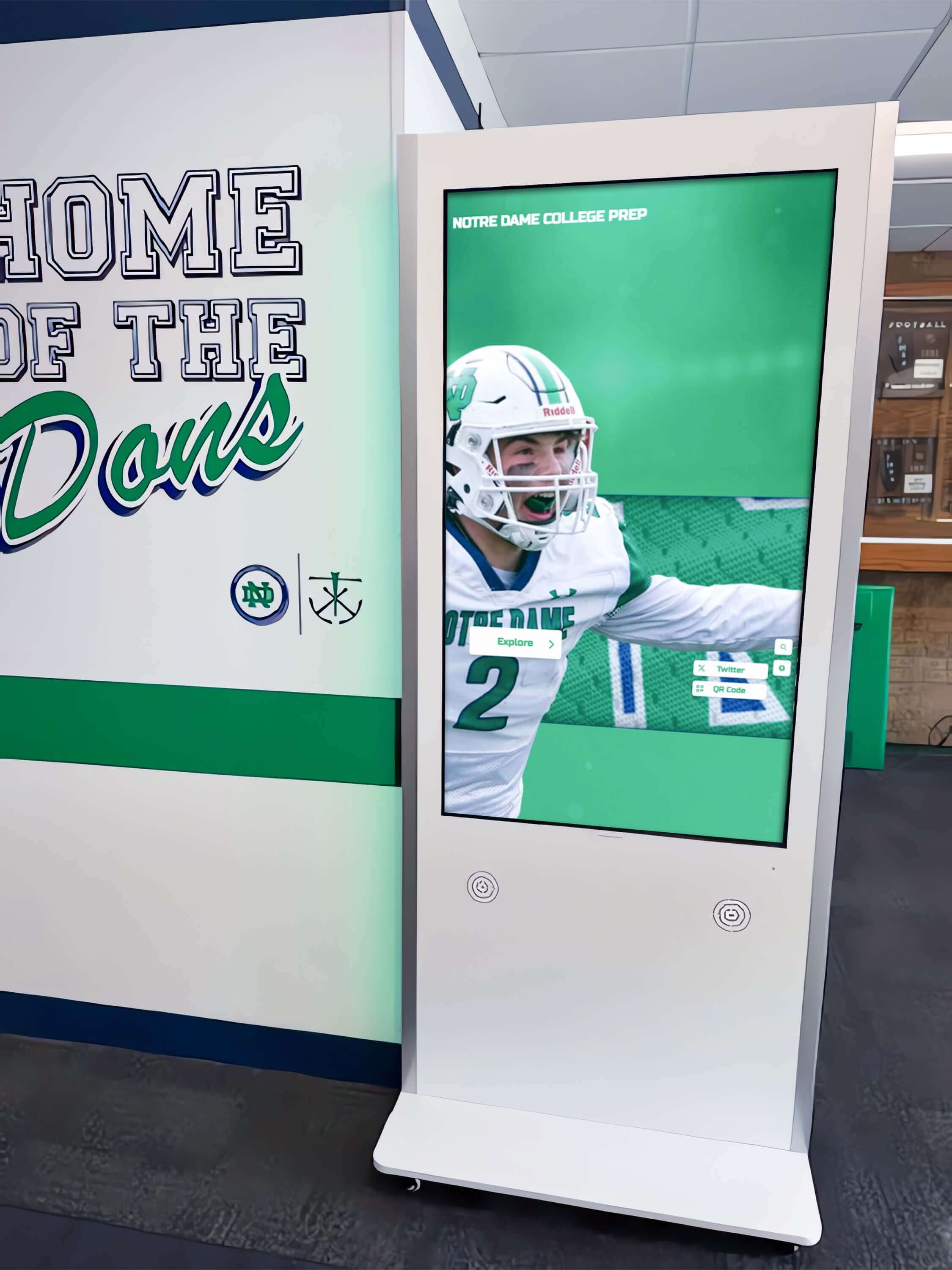
Many technically-inclined students find their passion through theatre technical work, developing career-relevant skills in design, engineering, and project management. Recognition programs that honor technical excellence communicate that theatre encompasses diverse talents beyond acting alone.
Production History and Legacy
Comprehensive displays document institutional theatre history creating connection across generations:
Production Archives
- Complete production history with performance dates
- Cast and crew listings for all shows
- Production photography galleries
- Set design renderings and construction documentation
- Playbill and program archives
- Production video excerpts and highlights
- Behind-the-scenes rehearsal footage
Director and Faculty Recognition
- Theatre director achievements and tenure
- Faculty production histories
- Guest director and choreographer credits
- Technical director contributions
- Alumni directors returning to lead productions
- Faculty theatrical backgrounds and professional experience
Theatre Program Milestones
- Program founding and history
- Theatre facility construction and improvements
- Major production anniversaries
- Notable alumni achievements in performing arts
- Community partnerships and collaborations
- Touring productions and festival participation
Schools implementing comprehensive theatre recognition discover that documenting production history builds program identity and continuity. Current students gain appreciation for institutional theatrical legacy while understanding themselves as part of continuing traditions of excellence.
Awards and Competitive Achievements
External validation through competitions and awards deserves prominent celebration:
State and Regional Honors
- State thespian conference awards and recognition
- Regional theatre competition placement
- One-act play competition results
- Technical theatre competition achievements
- Individual performer honors and selection
- Troupe charter and status recognition
National Recognition
- International Thespian Society honors
- National theatre festival participation
- Theatre scholarship recipients
- Professional theatre program acceptances
- Broadway junior awards and selection
- National technical theatre recognition
Community and Professional Acknowledgment
- Local theatre community awards
- Professional theatre partnerships
- Community arts organization recognition
- Regional press coverage and reviews
- Audience choice awards
- Civic arts awards and grants
Modern Digital Solutions for Theatre Recognition
Traditional bulletin boards and trophy cases face significant limitations when celebrating comprehensive theatre program achievements. Digital interactive displays transform recognition through multimedia capabilities, unlimited capacity, and engaging accessibility.
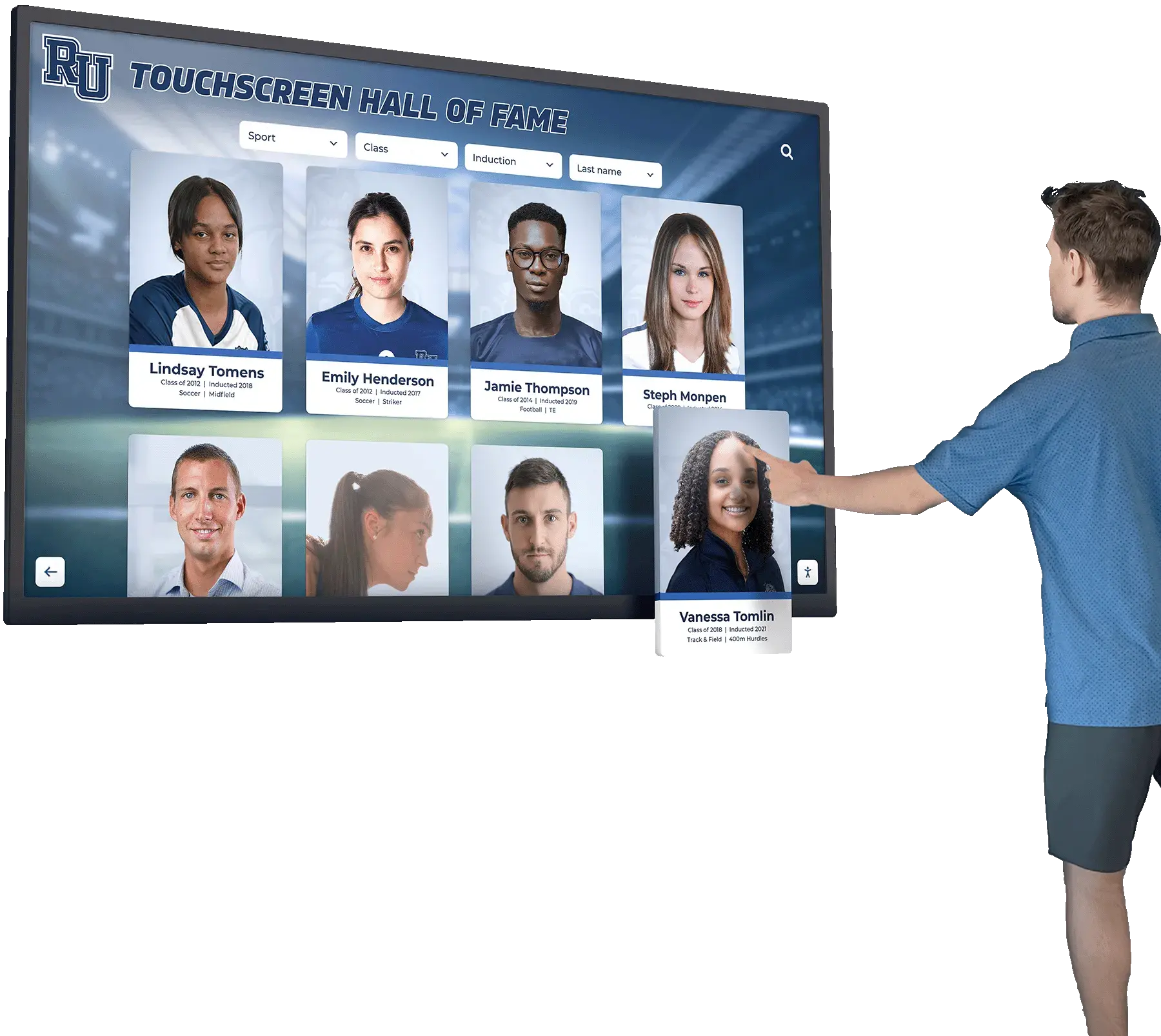
Advantages Over Traditional Recognition Methods
Space and Capacity Limitations
Physical trophy cases and wall displays face inherent constraints that digital solutions eliminate:
- Limited Physical Space: Traditional displays accommodate finite plaques, trophies, and photos, forcing difficult decisions about which achievements receive recognition and which must be excluded or removed
- Rotation Challenges: Updating physical displays requires removing old content, creating storage needs while eliminating visibility for past achievements
- Poor Multimedia Support: Static displays cannot incorporate video performances, audio samples, or interactive content that brings theatrical excellence to life
- Maintenance Requirements: Physical displays deteriorate over time, requiring replacement, repair, and ongoing upkeep
- Accessibility Constraints: Traditional displays serve only those physically present in school buildings, excluding alumni, remote families, and broader communities
Digital Display Capabilities
Interactive theatre recognition boards provide transformative advantages:
Unlimited Recognition Capacity
- Showcase unlimited student performers without space constraints
- Comprehensive technical crew recognition across all specialties
- Complete production archives spanning decades
- Detailed achievement descriptions beyond brief plaque text
- Multiple award categories without separate physical displays
- Growing archives that expand rather than require removal
Rich Multimedia Content
- Performance video excerpts showing students in action
- Complete production recordings when available
- Behind-the-scenes rehearsal and construction footage
- Photo galleries from technical rehearsals and performances
- Audio samples of musical performances
- Time-lapse videos of set construction and production preparation
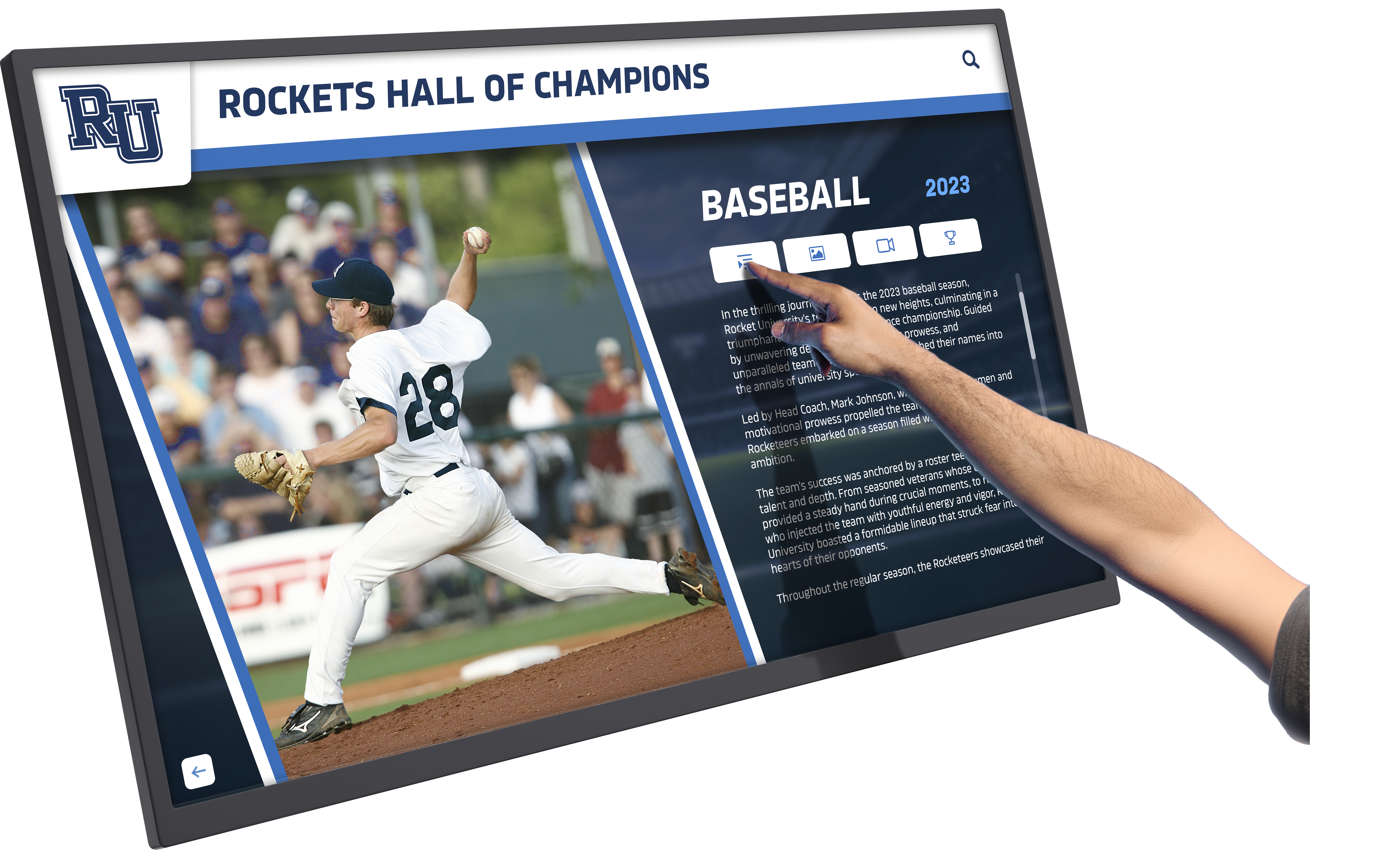
Enhanced Accessibility and Engagement
- Web-based access enabling viewing from anywhere globally
- Mobile-responsive displays accessible on smartphones and tablets
- Social media sharing amplifying recognition reach
- Search functionality for finding specific students or productions
- Interactive exploration engaging visitors actively
- Alumni connections enabling former students to revisit their theatre experiences
Easy Content Management
- Cloud-based updates from any internet-connected device
- Template-based content creation ensuring consistent presentation
- Scheduled publishing coordinating with production schedules
- Bulk upload capabilities for historical content digitization
- Multiple administrator access levels with permission controls
- Automated backups preventing content loss
Solutions like Rocket Alumni Solutions provide purpose-built platforms specifically designed for comprehensive achievement recognition, combining intuitive content management with engaging touchscreen displays that transform how schools celebrate theatrical excellence.
Theatre-Specific Features and Content
Effective theatre recognition systems support unique performing arts program needs:
Cast and Crew Databases
- Searchable databases of all productions with complete cast/crew listings
- Individual student profiles showing production participation history
- Role-specific information with character descriptions
- Technical position documentation with responsibilities
- Multiple production views (by year, show, student, role type)
- Cross-referencing enabling relationship exploration
Production Galleries
- High-resolution production photography organized by show
- Costume design galleries showing theatrical artistry
- Set design renderings and construction progression
- Makeup and special effects documentation
- Backstage and technical area photography
- Rehearsal process documentation
Video Integration
- Featured performance scene excerpts
- Full production recordings when rights allow
- Behind-the-scenes documentary content
- Student testimonials about theatre program impact
- Director introductions and show background
- Technical process demonstration videos
Schools seeking to implement comprehensive digital campus experiences discover that theatre recognition displays serve multiple purposes beyond drama program recognition—enhancing school tours, engaging prospective families, and showcasing institutional commitment to comprehensive arts education.
Strategic Implementation for Maximum Impact
Successful theatre interactive display boards require thoughtful planning addressing content development, physical placement, integration with existing systems, and ongoing maintenance.
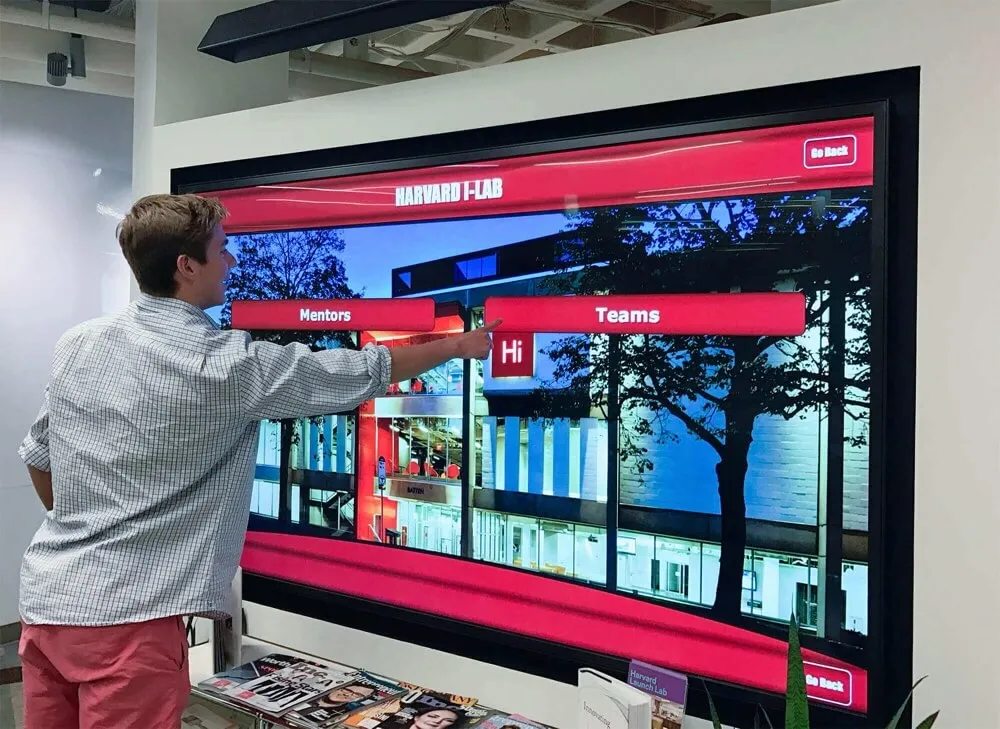
Needs Assessment and Goal Definition
Current State Analysis
Before implementing new recognition systems, document existing approaches:
- Inventory current theatre recognition (bulletin boards, trophy cases, websites)
- Survey students about what theatre achievements matter most to them
- Interview theatre faculty about recognition priorities and challenges
- Gather past production documentation (programs, photos, videos)
- Assess available historical content for digitization
- Identify content gaps requiring new documentation processes
Stakeholder Engagement
Involve key groups in planning to ensure solutions meet real needs:
- Theatre students providing perspective on meaningful recognition
- Technical crew members ensuring technical excellence receives equivalent honor
- Theatre directors and faculty defining program priorities
- Parent booster organizations potentially supporting funding
- School administration aligning with institutional goals
- Alumni sharing historical content and perspective
Clear Objective Definition
Establish specific goals guiding implementation:
- Increase theatre program enrollment and participation
- Improve community perception of drama program quality
- Create recruitment tool for prospective students
- Document theatre program history preserving institutional memory
- Provide equivalent recognition visibility to athletic programs
- Celebrate technical theatre excellence alongside performing achievement
Content Development Strategy
Historical Content Digitization
Comprehensive recognition requires organized historical information:
- Compile production histories from programs, yearbooks, and archives
- Gather production photography from multiple sources
- Digitize video recordings of past performances
- Create standardized cast/crew documentation from archived programs
- Interview longtime faculty and alumni about program history
- Establish consistent data structures for historical content
Ongoing Documentation Processes
Sustainable systems require processes for capturing new achievements:
- Production photography protocols for all shows
- Cast/crew information collection systems
- Video recording permissions and archiving
- Student biography and testimonial gathering
- Technical process documentation photography
- Award and honor information compilation
Content Organization
Logical structures enable intuitive exploration:
- Chronological organization by production year
- Show-based browsing with complete cast/crew for each
- Student profile pages showing individual participation history
- Award category organization by type of recognition
- Technical specialty filtering (set design, lighting, costumes, etc.)
- Search functionality across all content types
Display Placement and Hardware Selection
Strategic Location Choices
Physical placement significantly affects visibility and impact:
- Theatre facility lobbies providing department-specific recognition
- Main school entrance communicating institutional arts commitment
- Student commons areas reaching broad audiences
- Performing arts center locations engaging audiences before shows
- Multiple distributed displays for large schools
- Portable displays for recruitment events and showcases
Hardware Considerations
Technical specifications should match usage requirements:
- Commercial-grade touchscreens designed for continuous operation
- Appropriate screen size for viewing distance and location
- High-resolution displays showcasing detailed images and video
- Audio capabilities for performance sound samples
- Network connectivity for cloud-based content management
- Durable enclosures protecting displays in high-traffic areas
Schools planning installations can reference resources on digital hall of fame implementation that address technical considerations, installation best practices, and long-term sustainability planning.
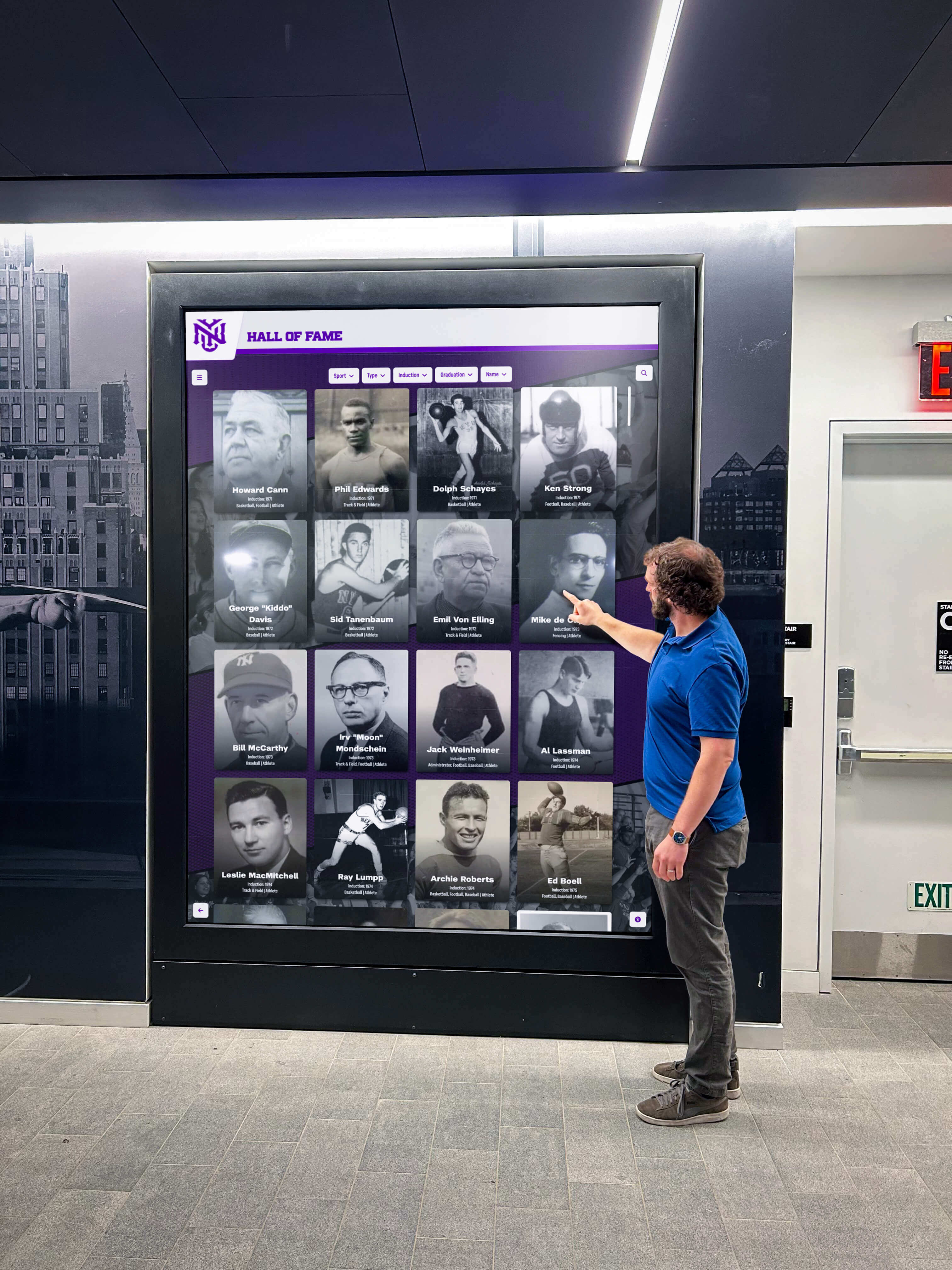
Integration with Broader Recognition Systems
Comprehensive Achievement Celebration
Theatre recognition functions optimally as part of broader institutional recognition:
- Combined arts recognition displays including theatre, music, visual arts
- Academic achievement displays providing equivalent visibility to performing excellence
- Athletic recognition displays balanced with equivalent arts celebration
- Service and leadership recognition honoring diverse student contributions
- Hall of fame inductees representing achievement across all areas
Website and Social Media Integration
Digital recognition extends beyond physical displays:
- Web-based galleries accessible to alumni and remote families
- Social media sharing of production highlights and recognition
- Embedded displays on school and theatre department websites
- Mobile-responsive design enabling smartphone access
- Integration with ticketing and performance promotion systems
Recruitment and Marketing Applications
Theatre recognition serves strategic institutional purposes:
- Prospective student campus tour integration
- Drama program promotional materials and presentations
- Development and fundraising applications showcasing program excellence
- Community engagement building support for arts programs
- Alumni relations tools maintaining connections with former theatre students
Building Theatre Culture Through Recognition
Beyond honoring individual achievements, comprehensive recognition systems transform drama program culture in measurable ways.
Increasing Participation and Diversity
Attracting New Students
Visible theatre recognition directly influences enrollment:
- Prospective students seeing performing arts valued equally with athletics
- Technical students recognizing that behind-the-scenes work receives acknowledgment
- Diverse achievement categories appealing to varied student interests
- Alumni success stories inspiring younger students
- Family engagement increasing through accessible recognition
- Peer influence as friends see valued participation
Retention and Sustained Involvement
Recognition encourages multi-year participation:
- Students seeing progression through participation levels
- Multi-show participants building relationships and investment
- Recognition of improvement and growth beyond just leading roles
- Senior legacy acknowledgment valuing sustained commitment
- Leadership recognition for mentoring and program contribution
- Technical specialty development encouraging skill deepening
Schools implementing comprehensive theatre recognition typically report 20-35% increases in drama program participation within two years of installation, with particularly notable growth in technical theatre involvement and sustained multi-year student engagement.
Strengthening Community and Alumni Connections
Family Engagement
Digital recognition creates new family involvement opportunities:
- Parents accessing performance footage and recognition content remotely
- Extended families viewing productions and achievements from distant locations
- Social sharing enabling broad network acknowledgment
- Digital archives allowing families to preserve memories permanently
- Alumni parent connections discovering their children’s participation preceded by their own
Alumni Relations
Theatre program alumni represent passionate potential supporters:
- Former students finding their own production history and reconnecting with memories
- Alumni networking identifying others from shared production experiences
- Career pathway documentation showing theatre’s professional relevance
- Mentorship opportunities connecting current students with professional alumni
- Development prospects seeing program excellence deserving financial support
- Legacy families discovering multi-generational theatre participation
Comprehensive alumni engagement through interactive displays transforms casual viewers into active program advocates and supporters.
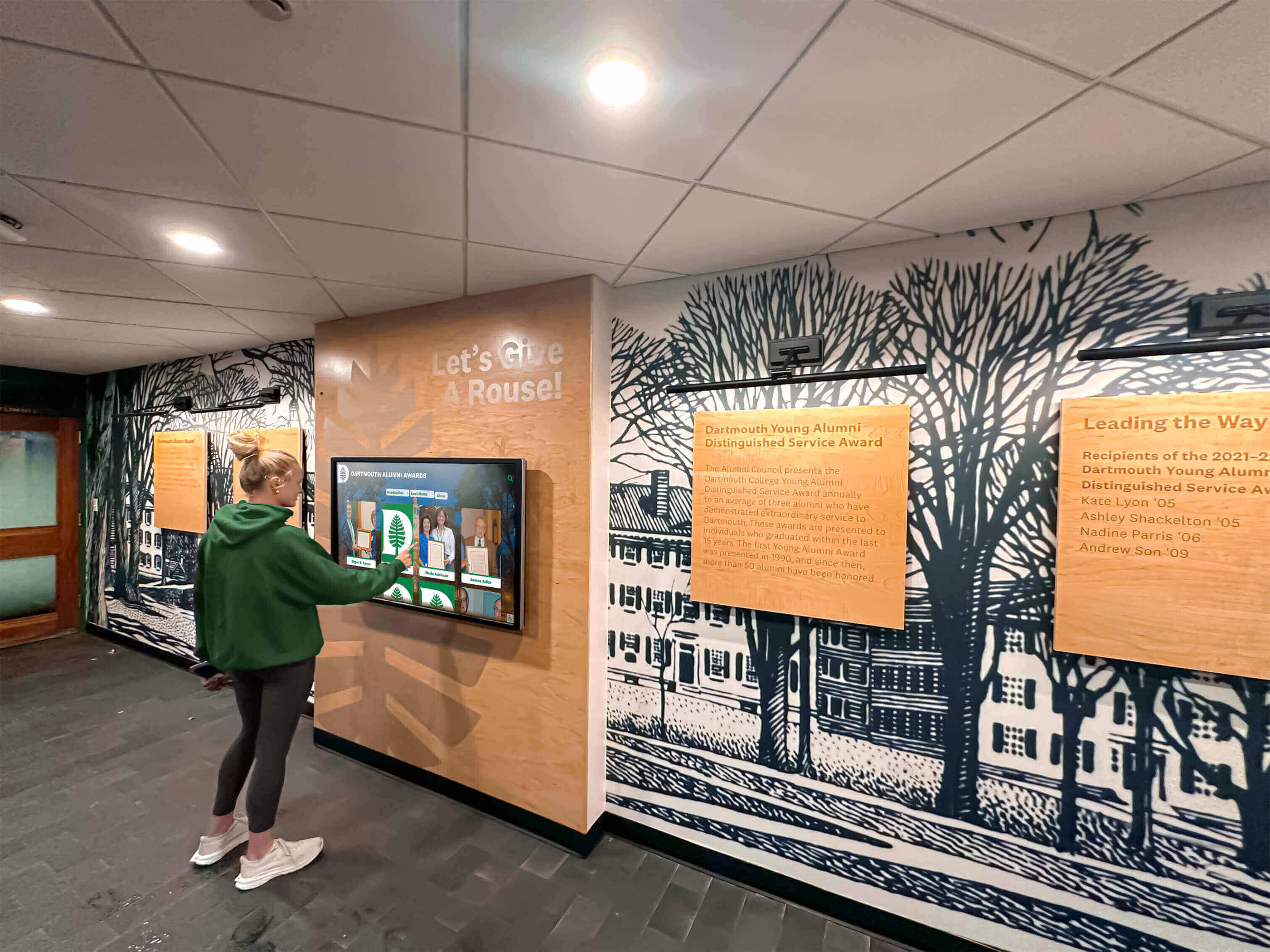
Elevating Theatre Program Status
Institutional Positioning
Visible recognition communicates theatre program importance:
- Equivalent visibility to athletic programs signaling balanced institutional priorities
- Professional presentation quality reflecting program excellence
- Comprehensive documentation demonstrating program depth and sustainability
- Investment in recognition infrastructure indicating long-term commitment
- Community-facing displays showing pride in performing arts achievements
- Administrative support demonstrated through resource allocation
Resource and Funding Implications
Recognition affects material program support:
- Booster organization engagement increasing donations and volunteer support
- Grant application competitiveness enhanced by documented excellence
- Budget allocation discussions influenced by visible program value
- Facility improvement advocacy strengthened by recognition of program importance
- Community partnerships developing from increased visibility
- Sponsorship opportunities emerging from broader program awareness
Overcoming Common Implementation Challenges
Schools encounter predictable obstacles when implementing theatre recognition systems. Anticipating these challenges enables proactive solutions.
Budget Constraints and Funding Strategies
Challenge: Theatre programs commonly face limited budgets making significant recognition investments difficult.
Solutions:
- Phased implementation starting with basic digital display and expanding over time
- Grant applications to arts education foundations and local arts councils
- Theatre booster organization fundraising specifically for recognition project
- Community business sponsorships providing funding in exchange for acknowledgment
- Combined arts recognition displays sharing costs across music, visual arts, and theatre
- Long-term cost comparison showing digital solutions eventually cost less than ongoing physical display maintenance
Budget-Conscious Approaches:
- Start with web-based recognition accessible on existing computers and devices
- Implement single strategic display in highest-impact location before expanding
- Digitize historical content in phases beginning with recent productions
- Leverage student technical theatre expertise for content creation and photography
- Utilize existing video recordings rather than re-recording historical productions
- Partner with school IT departments for technical infrastructure support
Historical Content Gaps and Documentation
Challenge: Many theatre programs lack comprehensive historical records, production photography, or archived programs.
Solutions:
- Launch alumni outreach requesting historical photos, programs, and memories
- Digitize available yearbook content showing productions and casts
- Create oral history interviews with longtime faculty and alumni
- Accept that historical sections may have gaps while focusing on comprehensive current documentation
- Implement robust processes ensuring future productions receive thorough documentation
- Recognize recent productions first while gradually adding historical content
Documentation Best Practices:
- Standardize production photography protocols for all shows
- Establish video recording permissions and archiving procedures
- Create cast/crew information collection templates
- Assign technical theatre students to document technical process
- Develop simple biography collection forms for student profiles
- Integrate documentation responsibilities into production schedules
Balancing Performer and Technical Recognition
Challenge: Ensuring technical excellence receives equivalent visibility to on-stage performance.
Solutions:
- Separate technical excellence award categories with equal prominence
- Comprehensive crew listings with specific position documentation
- Technical process galleries showing design and construction work
- Student technical specialist profiles highlighting individual contributions
- Video content demonstrating technical work quality and complexity
- Awards criteria explicitly including technical achievement
- Visual balance in displays between performers and technical crew
Schools implementing comprehensive student achievement recognition find that explicit attention to technical theatre ensures all drama program contributions receive appropriate celebration.
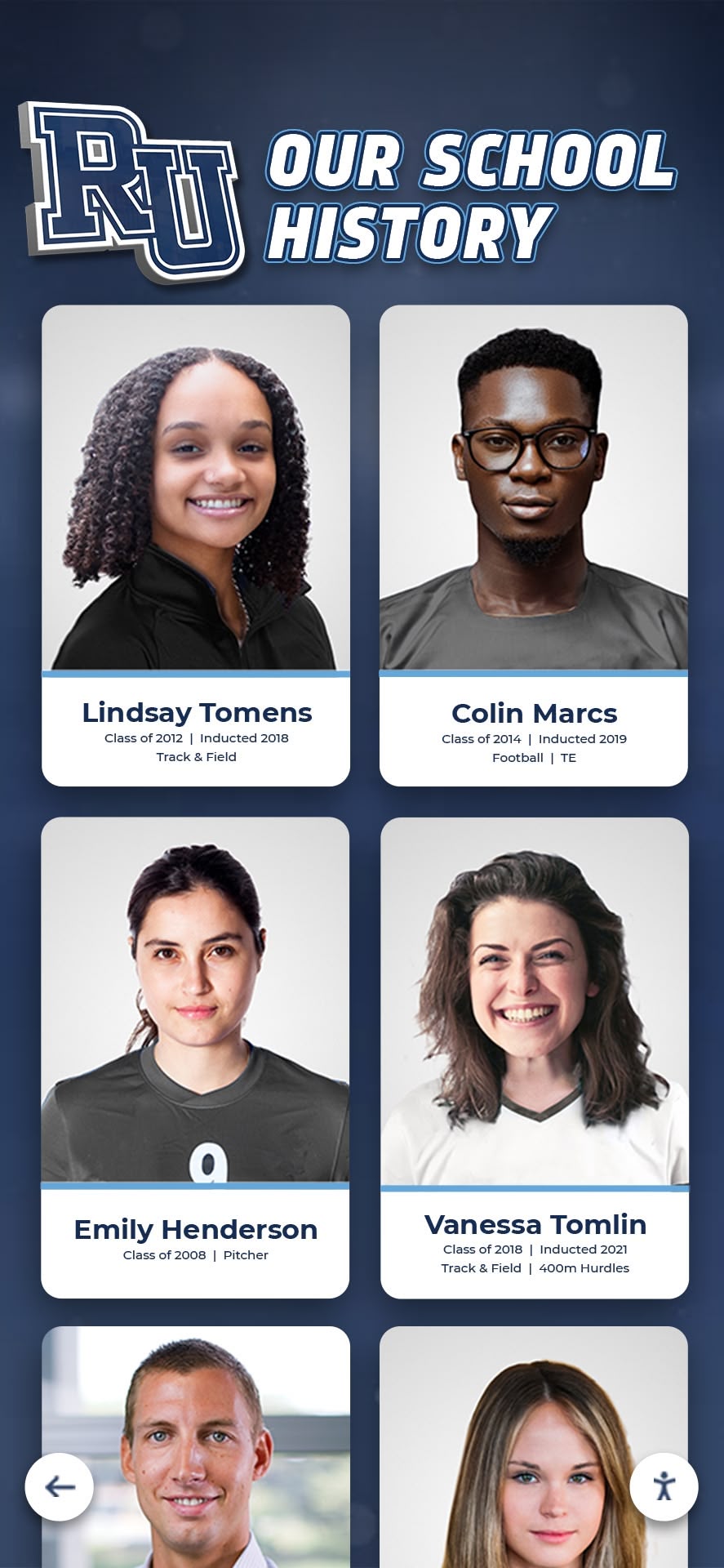
Technology Platform Selection and Vendor Evaluation
Choosing appropriate technology partners significantly affects implementation success and long-term satisfaction.
Essential Platform Capabilities
Content Management Requirements:
- Web-based administration accessible from any device
- Intuitive interfaces requiring minimal technical expertise
- Template-based content creation ensuring consistent presentation
- Bulk upload capabilities for historical content migration
- Media library management for photos and videos
- Scheduled publishing coordinating with production calendars
- Multiple user accounts with permission controls
- Mobile-responsive design for smartphone access
Display and User Experience Features:
- Touchscreen interface supporting interactive exploration
- High-quality video playback with smooth performance
- Searchable content across all students and productions
- Filtering by year, show, student, role type, or technical specialty
- Attractive design templates reflecting school branding
- Fast loading and responsive interaction
- Accessibility features for users with disabilities
- Analytics revealing engagement patterns and popular content
Technical Infrastructure:
- Commercial-grade hardware designed for continuous operation
- Network connectivity options (WiFi and hardwired)
- Content delivery networks ensuring fast performance
- Automated backups preventing data loss
- Software updates maintaining security and functionality
- Technical support and troubleshooting assistance
- Integration capabilities with school websites and systems
Vendor Evaluation Criteria
Educational Experience:
- Portfolio of successful school implementations
- Understanding of educational institution needs and constraints
- References from similar high schools
- Experience with performing arts recognition specifically
- Long-term customer relationships demonstrating satisfaction
- Proven support quality and responsiveness
Implementation Support:
- Professional installation services
- Content migration assistance for historical digitization
- Staff training programs ensuring comfortable system use
- Design customization reflecting school branding
- Launch support ensuring successful initial deployment
- Ongoing technical support and consultation
Long-Term Partnership Value:
- Financial stability and company longevity
- Commitment to continuous platform improvement
- Regular software updates and feature additions
- Transparent pricing without hidden fees
- Flexible contract terms accommodating school budgets
- Growing feature set expanding capabilities over time
Solutions like Rocket Alumni Solutions provide comprehensive platforms specifically designed for educational recognition with proven track records serving hundreds of schools nationwide.
Success Stories and Impact Examples
Real-world implementations demonstrate measurable benefits from theatre interactive display boards.
Participation Growth at Suburban High School
A 1,200-student suburban high school installed an interactive theatre recognition display in their performing arts center lobby showcasing 40 years of production history, current student profiles, and technical excellence documentation.
Measurable Impacts After Two Years:
- Drama club enrollment increased 42% from 45 to 64 students
- Technical theatre participation grew 67% from 18 to 30 students
- Previously struggling to cast shows, program now conducts competitive auditions
- Parent volunteer hours increased 55% as family engagement strengthened
- Booster organization membership grew from 22 to 38 active families
- Local press coverage of productions increased substantially
The theatre director reported, “Students finally see that theatre excellence receives the same institutional recognition as athletic achievement. The display has become a point of pride that prospective students and families specifically ask about during campus tours.”
Alumni Engagement at Urban Performing Arts Magnet
A competitive performing arts magnet school implemented comprehensive digital theatre recognition including production archives dating to the school’s 1975 founding.
Community Impact Outcomes:
- Alumni engagement increased dramatically with former students regularly accessing production archives
- Five successful theatre professionals agreed to mentor current students after discovering their profiles
- Annual giving from theatre alumni increased 78% as connections strengthened
- Prominent alumni shared recognition content widely on social media, substantially raising program visibility
- Reunion attendance increased as alumni reconnected through shared production experiences
The development director noted, “The recognition display transformed alumni relations by creating accessible touchpoints that maintain emotional connections long after graduation. Theatre alumni particularly value being able to revisit formative experiences and share them with their own families.”
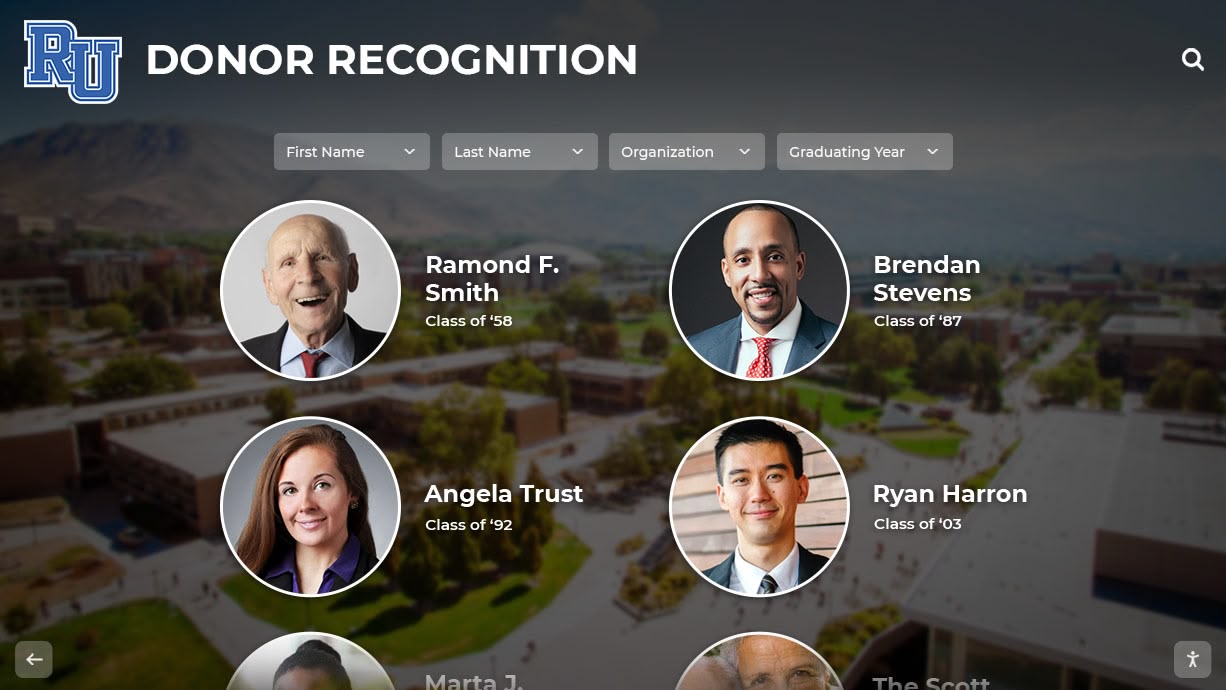
Future Trends in Theatre Program Recognition
Theatre recognition technology continues evolving with emerging capabilities promising even more engaging experiences.
Augmented Reality Integration: Mobile apps may enable pointing smartphones at physical spaces to trigger overlaid video content showing performances in those locations or displaying set design renderings as virtual overlays.
Artificial Intelligence Applications: AI-powered chatbots could answer questions via displays (“Show me all musicals from the 1990s” or “Find productions featuring Jane Smith”), while automated video editing might create performance highlight reels without manual production.
Virtual Reality Experiences: VR headsets could enable immersive experiences walking through historical set designs, attending archived performances as virtual audience members, or exploring backstage areas during productions.
Social Integration Expansion: Deeper integration with platforms like Instagram and TikTok might enable students to share recognition content directly to their networks, tag themselves in production photos, and automatically notify connections when featured.
Personalized Content Delivery: Advanced systems might create personalized landing pages for each student showing their complete theatrical participation history, shareable with college applications or professional portfolios.
Schools interested in staying current with emerging recognition platform capabilities should select technology partners committed to continuous innovation and regular feature updates.
Conclusion: Transforming Theatre Program Culture Through Recognition
Theatre interactive display boards represent far more than digital replacements for traditional bulletin boards. These comprehensive recognition systems transform drama program culture by communicating institutional commitment to performing arts excellence, inspiring increased student participation, celebrating technical achievement alongside performing accomplishments, preserving production histories, engaging families and alumni, and elevating theatre program status to parity with athletics.
The most effective implementations combine thoughtful content development spanning historical archives through current productions, strategic physical placement maximizing visibility and accessibility, user-friendly technology enabling easy ongoing management, and integration with broader institutional recognition systems ensuring theatre receives equivalent prominence to other achievement areas.
Whether addressing recognition inequity, seeking to increase drama program participation, wanting to engage alumni more effectively, or simply believing that theatrical excellence deserves visible celebration, modern interactive displays provide proven solutions that deliver measurable impact while honoring the students whose dedication and talent bring stories to life on stage.
For high schools ready to transform theatre recognition, solutions like those from Rocket Alumni Solutions provide comprehensive platforms specifically designed for performing arts programs—combining intuitive content management, engaging touchscreen displays, proven reliability, and responsive support that ensures sustainable programs celebrating theatrical excellence for generations to come.
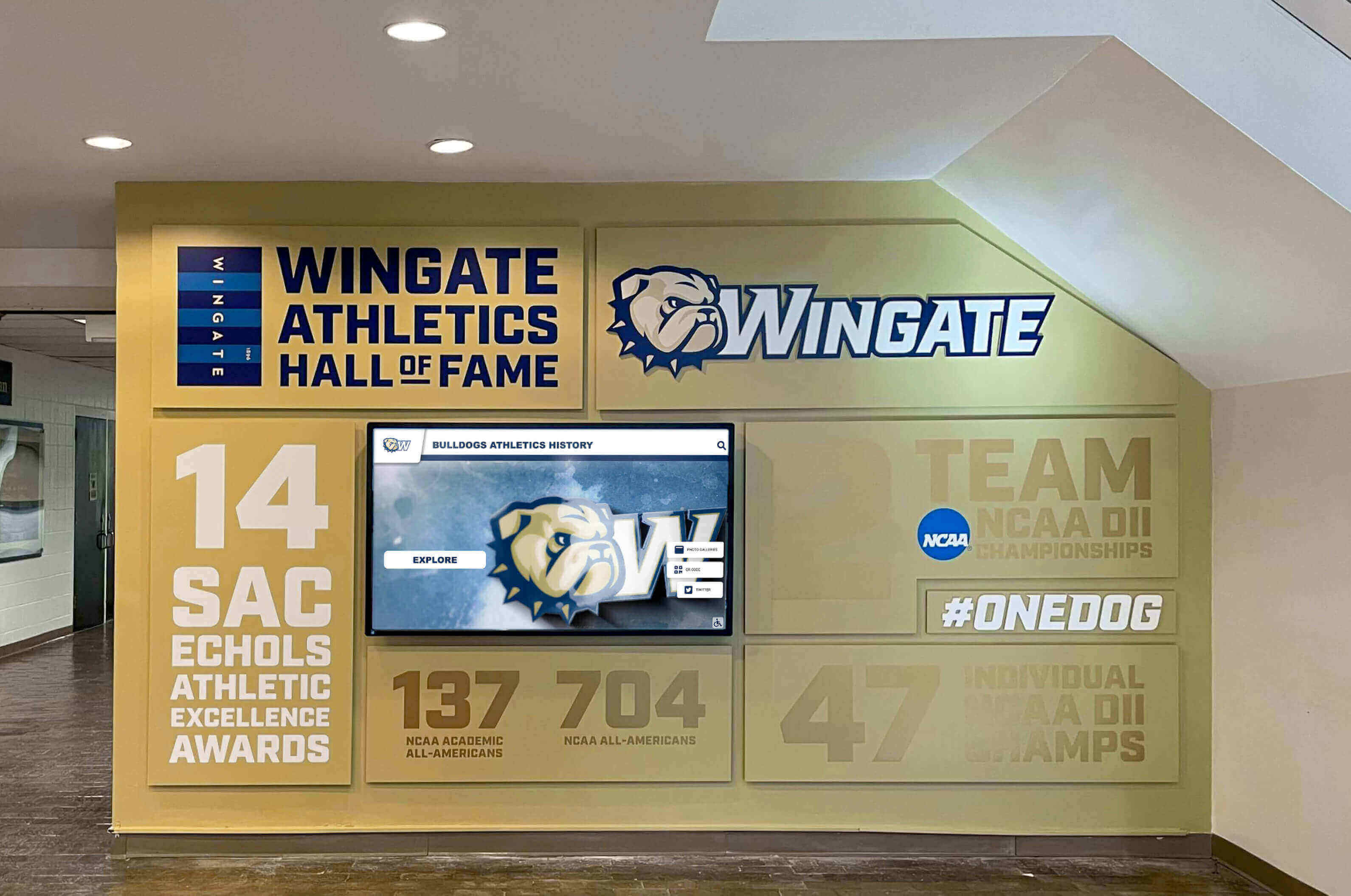
Start building stronger theatre culture today through recognition systems that celebrate every student’s creative contributions and establish your drama program’s place as an essential component of comprehensive educational excellence.
